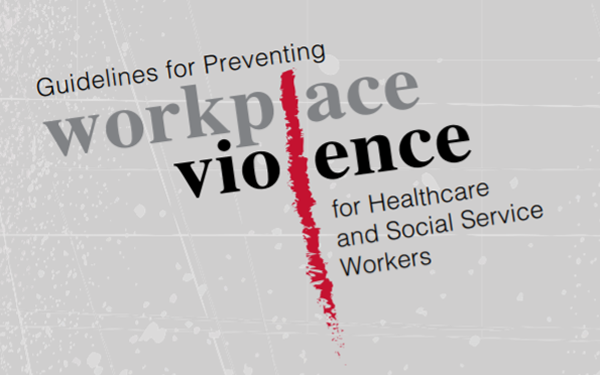Emergency department (ED) workers are frequently targets of violence. One recent study showed that 55 percent of ED nurses experienced physical violence and/or verbal abuse from a patient or a visitor over a single one-week period. PCTs, security, technologists, physicians and support staff are also victims.
The most common types of physical assault comprise grabbing, hitting, punching, slapping, pushing, shoving, and kicking. In terms of verbal abuse, ED staff are cursed at, yelled at, called names and threatened. Incidents most often happen in the patient room and often involve psychiatric patients or those who are under the influence of drugs or alcohol.
The effects of workplace violence are multi-dimensional. Workers may be psychologically traumatized and fearful of returning to work. They may feel incompetent and concerned about criticism from their managers. Job satisfaction can be negatively impacted. Despite potentially debilitating effects, ED workers often don’t report violence.
1199SEIU has been a strong advocate of safe workplaces for healthcare workers. In New York State, the Union pushed for legislation that made assaulting a healthcare worker a felony.
Professional associations have issued position statements calling for strong workplace violence policies and enhanced worker protection. The Emergency Nurses Association (ENA) states that the “mitigation of WPV requires a ‘zero tolerance’ environment instituted and supported by hospital leadership.” ENA President Patricia Kunz Howard told Partnership Matters, “Everyday across the U.S., workplace violence occurs in every emergency department. While the severity can range from verbal assaults to life-threatening injuries, emergency nurses and all health care providers should not feel unsafe as they serve their patients. It is time to ensure that our workplaces are safe and that perpetrators are subject to appropriate criminal actions.”
EDs seeking guidance for program development can consult the Occupational Safety and Health Administration (OSHA) Guidelines for Preventing Workplace Violence for Healthcare and Social Service Workers.
First, OSHA recommends securing management commitment and worker participation, and forming a labor management committee responsible for driving the program. The LMP provides consulting and coaching services to such committees at Brookdale University Hospital and St. John’s Episcopal Hospital. At Brookdale, the committee work is building on and complementing improvements that the hospital and ED administration have already undertaken – the labor-management committee is identifying additional opportunities.
Once the committee is formed, it must do a worksite assessment to identify hazards that may lead to violent incidents. According to OSHA, “workers have a critical role to play in helping to identify and assess workplace hazards because of their knowledge and familiarity with facility operations, process activities and potential threats.” The guidelines include an assessment checklist.
When the committee has a solid understanding of threats in its ED, it is time to identify prevention and control solutions. OSHA offers a long list of potential options for physical/environmental controls, administrative/work practice controls, and post-incident procedures. A strong recommendation is made for providing prompt psychological evaluation to all victimized staff and witnesses.
In addition to implementing prevention and control measures, OSHA recommends safety and health training for staff, managers and security. Staff, for example, can be trained in personal safety and management of assaultive behavior.
To identify program deficiencies, accurate record-keeping and ongoing evaluation are necessary. To facilitate evaluation, the ED should keep accurate records of injuries, incidents, patient histories and corrective actions.
